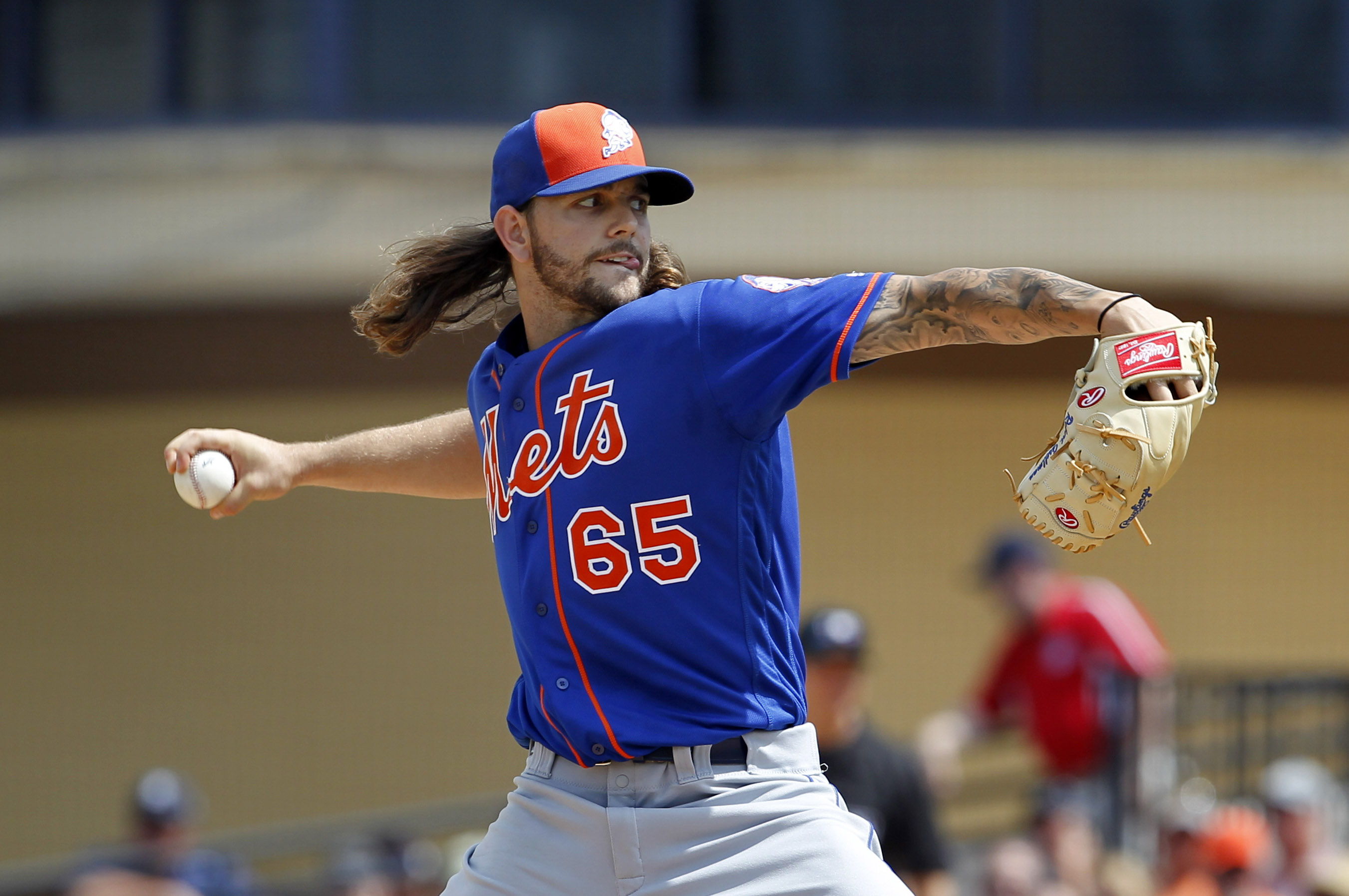The best Mets pitching prospect has a new toy, and early in the 2016 season, he’s enjoying playing with it. It’s the same toy many of the big kids already owned. Down in Double-A, in Binghamton, Robert Gsellman learned a version of the “Warthen slider” late in the 2015 season.
B-Mets Pitching Coach Glen Abbott explained that the slider was a pitch we thought he needed to have to complement his curveball, changeup and fastball. “I told him last year and we started messing with it and I talked to [Mets Pitching Coordinator Ron] Romanick and we introduced it to him late in the year.”
For Gsellman, the process of learning the pitch relied on touch. The key he explained was understanding that for the pitch to work he needed to make it “more like a feel, as long as I can get a good feel, with the proper mechanics to get out front and on top of it and just let the grip do its work.”
Gsellman took the pitch home with him to Southern California and to his winter workouts at Barwis Methods in Port St. Lucie. By the accounts of coach and pupil, the offering is improving.
Gsvllman said simply, “It’s coming along well.” Abbott was the more talkative of the pair, “It’s always gonna get better and true enough, we come to spring training and it’s better. I think it’s better now [in mid-April] than when he got to spring training even. It’s a pitch that’s gonna help him a lot.”
With the Mets graduating a rotation’s worth of young studs in the last three years, the system is thinner entering 2016. Gsellman does not not the front-line potential of the guys slinging heat in Queens. However, the solidly-built righthander has a fastball that lives in the low 90s and he spots it well. He has feel for a firm changeup, but struggled with his breaking ball in 2015.
In 2015 with Binghamton, Gsellman ran a 3.51 ERA in 16 starts over 92.1 innings with 49 strikeouts against 26 walks, an alarmingly low strikeout rate of just 13 percent.
Gsellman confessed that his curveball at the time was more like a “slurve” and was not consistent, in part due to his tendency to open his front side in his delivery. This meant that the breaking ball would stay up to his armside or he would have to “pull it.”
Abott was blunt about Gsellman’s 2015 arsenal, “I’d almost say his breaking ball didn’t help him when he was up here [in Double-A] last year. That’s how ineffective it was. He just didn’t throw it for strikes very good. What he did was pretty much with a fastball and a changeup that was too firm.”
Early in 2016, now with his slider and curveball, the results are promising. Through four starts, Gsellman has fanned 21.3 percent of opposing hitters on his way to a 2.19 ERA in 24.2 innings.
Both player and coach suggest that learning the slider has turned into a two-for-one: it has also helped his curveball. Other pitchers in the system, notably Noah Syndergaard, have made similar arguments. The Warthen slider relies on a pitcher to throw the pitch hard, almost like a fastball, and trust the subtle manipulation in the grip to deliver the necessary movement. That nuance in manipulating the ball off a pitcher’s fingers can translate into other offerings.
Gsellman explains: “I just think it’s a feel thing. With a slider you have to get out front, and with a curveball you get around it a little more and stay on top of it. I can feel it coming through my arm motion.”
Abbott sees the transfer. “That’s what [the slider] did to the curveball, it tightened it up. Everything gets tightened up when you throw a slider, and he’s incorporated that into the curveball.”
Gsellman and Abbott agree that he’s pitching more aggressively with more confidence in 2016. And why not? He’s got a new toy and a few good starts to begin the year.
Photo Credit: Reinhold Matay-USA TODAY Sports

1 comment on “The Next Mets Pitching Prospect to Develop a Slider Is …”
Comments are closed.